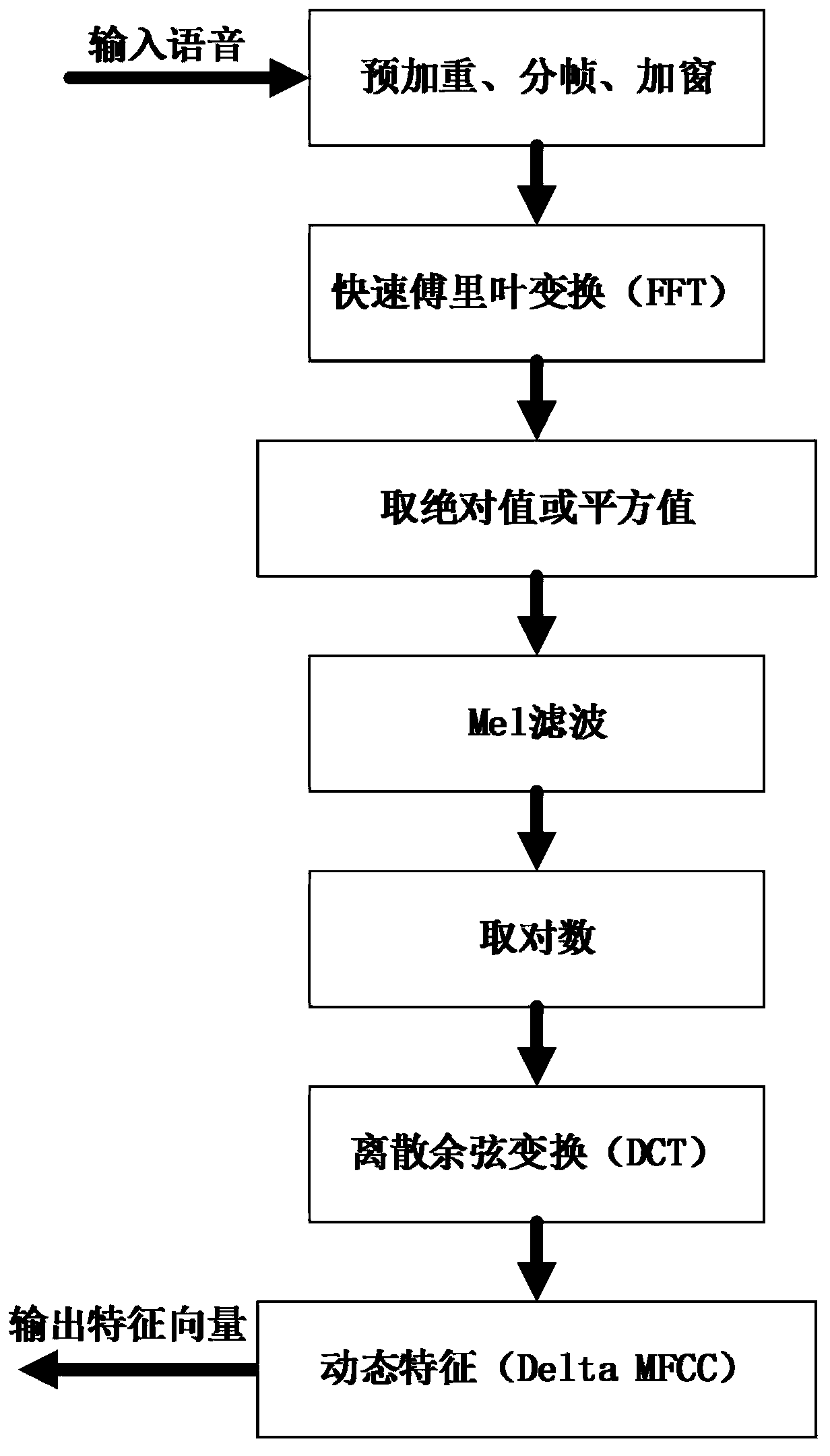A Backend i-vector Augmentation Method for Speaker Recognition System
A speaker recognition and speaker technology, applied in the field of speaker recognition, can solve the problems of complex system structure, increase of voice signal processing calculation, etc., to improve competitiveness, enhance real-time recognition, and improve system noise robustness Effect
- Summary
- Abstract
- Description
- Claims
- Application Information
AI Technical Summary
Problems solved by technology
Method used
Image
Examples
Embodiment Construction
[0030] The specific embodiments of the present invention will be further described below in conjunction with the accompanying drawings: figure 1 As shown, the technical solution adopted by the present invention is as follows: A DNN-based i-vector back-end enhancement method for speaker recognition system includes the following steps: divided into two stages: training and recognition, the training steps are:
[0031] The first step is to pre-process the speaker's speech signal, including pre-emphasis, endpoint detection, framing, and windowing.
[0032] (1) Pre-emphasis
[0033] Pre-emphasis is to pass the speech signal through a high-pass filter:
[0034] H(Z) = 1-μz -1
[0035] The value of μ in the formula is between 0.9-1.0, and we usually take 0.97. The purpose of pre-emphasis is to increase the high frequency part, flatten the frequency spectrum of the signal, and keep it in the whole frequency band from low frequency to high frequency, and can use the same signal-to-noise ratio t...
PUM
 Login to View More
Login to View More Abstract
Description
Claims
Application Information
 Login to View More
Login to View More - R&D
- Intellectual Property
- Life Sciences
- Materials
- Tech Scout
- Unparalleled Data Quality
- Higher Quality Content
- 60% Fewer Hallucinations
Browse by: Latest US Patents, China's latest patents, Technical Efficacy Thesaurus, Application Domain, Technology Topic, Popular Technical Reports.
© 2025 PatSnap. All rights reserved.Legal|Privacy policy|Modern Slavery Act Transparency Statement|Sitemap|About US| Contact US: help@patsnap.com



